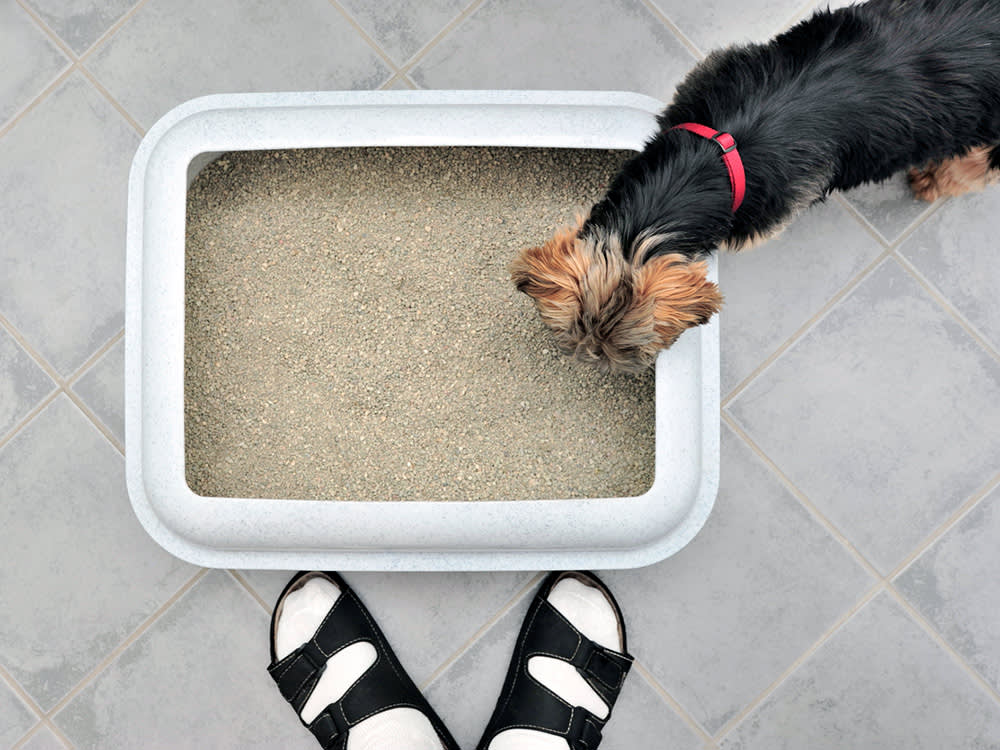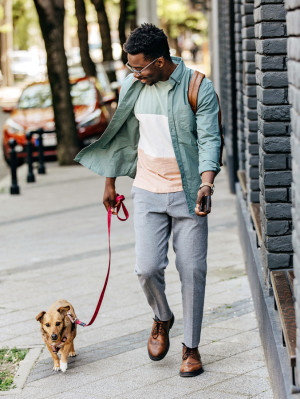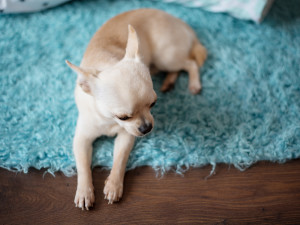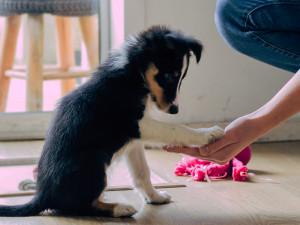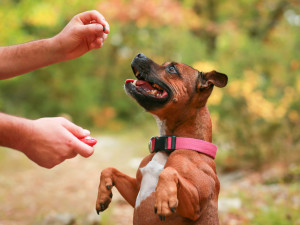Can You Train Your Dog to Use a Litter Box?
Whilst typically associated with cats, the idea of litter trays for dogs isn’t entirely far-fetched
Our editors (and their pets) picked out these products. They’re always in stock at the time we publish, but there’s a chance they’ll sell out. If you do buy through our links, we may earn a commission.
Rainy days, chilly mornings or mobility challenges – whatever the reason, the idea of training your dog to use a litter box might seem like a stroke of genius. But can our canine companions really adapt to such a feline habit? Whilst typically associated with cats, the idea isn’t entirely far-fetched for our dogs.
With our petrified rescue pup, Luna, taking her outside of our second-floor flat in the first three months just wasn’t an option, so a behaviourist suggested a ‘dog litter training trayopens in new tab’ for the balcony to begin the potty training process without putting the fear of God into her. They are very similar to the typical cat litter box, except the ‘litter’ is instead a patch of fake grass on top of a tray that, yep, you guessed it, collects the wee for you to clear away later (you lucky thing).
So whilst I know from personal experience it is possible to train even a nervous pup to use a litter tray, we speak to an expert about ins and outs of the unconventional toilet method and if it’s the right choice for you and your pup, exploring its benefits, challenges and the steps to successfully integrate it into your dog’s routine.
Advantages and disadvantages of litter box training your dog
Litter trays offer undeniable convenience, especially for those who live in cities or with mobility challenges, and they’re perfect for rainy days or for senior dogs with mobility issues, as walking may pose a challenge. Plus, if you’re unwell and can’t walk your dog temporarily, litter trays offer a great alternative respite.
Veterinary nurse and pet behaviour expert, Zoe Blakeopens in new tab, notes, “Litter trays could be seen as convenient especially for the pet parent who lives in a flat or has limited green space around them.” They also provide a hygienic alternative to outdoor elimination, “as it is easier to clean up and would reduce the risks of disease or parasites that can be associated with grass and soil,” says Zoe
However, the downsides include dealing with some pretty pungent smells (trust me) and the meticulous cleaning required for effective maintenance. (No one needs day old wee hanging around, and, if I’m honest, cleaning the tray personally became the bane of my existence). “If you are limited on space, adding in a tray may not be doable, especially as many dogs would not want to be eliminating in close proximity to their food and living area”, says Zoe.
“Investigations will need to be done so that you are aware of the waste constraints and how you will be disposing of the litter materials safely to prevent environmental contamination,” adds Zoe, emphasising that pet parents need to consider the specific needs of their dog and circumstances.
Which dogs can you train to use a litter tray?
Certain breeds and circumstances may lend themselves better to litter tray training than others. Small breeds and senior dogs, in particular, may benefit from the convenience and accessibility of a litter tray.
“Toy and small breeds such as a Chihuahua, Shih-Tzu, Pomeranian and Yorkshire Terrier may be your perfect choice to consider the use of a litter tray,” says Zoe. “Often these dogs are chosen due to the fact they don’t require big outdoor spaces and would only need a small litter tray or box; small dog = less waste produced so this may be more manageable.”
As mentioned previously, dogs navigating their super senior years with bladder and faecal control problems or timid temperaments may find going to the toilet outdoors challenging, making a litter tray a perfect practical solution. In the case of Luna, it meant toilet training happened in a matter of days, and (once she realised the wind wasn’t the devil spawn) meant that transferring that training from fake to real grass was a breeze (see what I did there).
On the other hand, energetic breeds such as Labradors, Collies and Spaniels may struggle with the concept. Equally, dogs with a high prey drive “like your Terriers and Hounds are instinctively driven to eliminate waste outside again meaning they may look at you like you are mad when you offer them a tray,” says Zoe, emphasising the importance of considering your dog’s natural inclinations and exercise needs.
For all pups, “toilet training is a key aspect of us nurturing our puppies as they navigate adolescence through to adulthood,” says Zoe, so abruptly switching from outdoor to indoor toileting can lead to confusion and accidents, especially during the training phase. “The training process may cause problems and toileting accidents suddenly come back to haunt you and your favourite rug or carpet.”
How to train your dog to use a litter tray
As with everything your pup does, successfully training your dog to use a litter tray hinges on consistency and positive reinforcement. Establishing a routine and using consistent cues are vital, says Zoe. “Consistency and positive reinforcement are vital when we are trying to teach a new behaviour.”
Monitor your dog closely to look out for warning signs they may need to go; unlike cats and their burying instinct, dogs won’t be as immediately drawn to litter (if that’s what you decide to use) so look out for behaviour such as whining, barking, trying to get your attention, acting unsettled and restless, sniffing near the doors or going around in circles, and redirect them to the tray.
Establish a routine by taking your dog to the tray after specific events such as meals or waking up. Use a consistent command and reward them generously for using the tray correctly. Avoid punishment, as it can create anxiety and fear, and hinder the training process, and avoiding too many changes to the environment or schedule will also minimise confusion. Instead, by rewarding desired behaviours with treats or praise, you can reinforce the habit of using the tray.
Despite your best efforts, challenges will undoubtedly arise during the training process. Dogs may resist or exhibit confusion, requiring patience and persistence. Zoe suggests “placing treats and toys near to the tray as it will create a positive association without forcing them to approach it.” However, avoid putting the treats and/or toys inside the litter box or on the litter tray, as, much like humans, dogs don’t tend to enjoy going to the toilet where they eat.
Whilst litter tray training offers a viable home toileting solution for certain dogs and situations, it’s not without its challenges. By understanding the benefits, considering your dog’s needs and implementing consistent training methods, you can for sure successfully teach your dog to use a litter tray. But, don’t forget about all the other benefits your pup will get from being outside the house, including sniffs and external stimulation. It’s all about balance!
